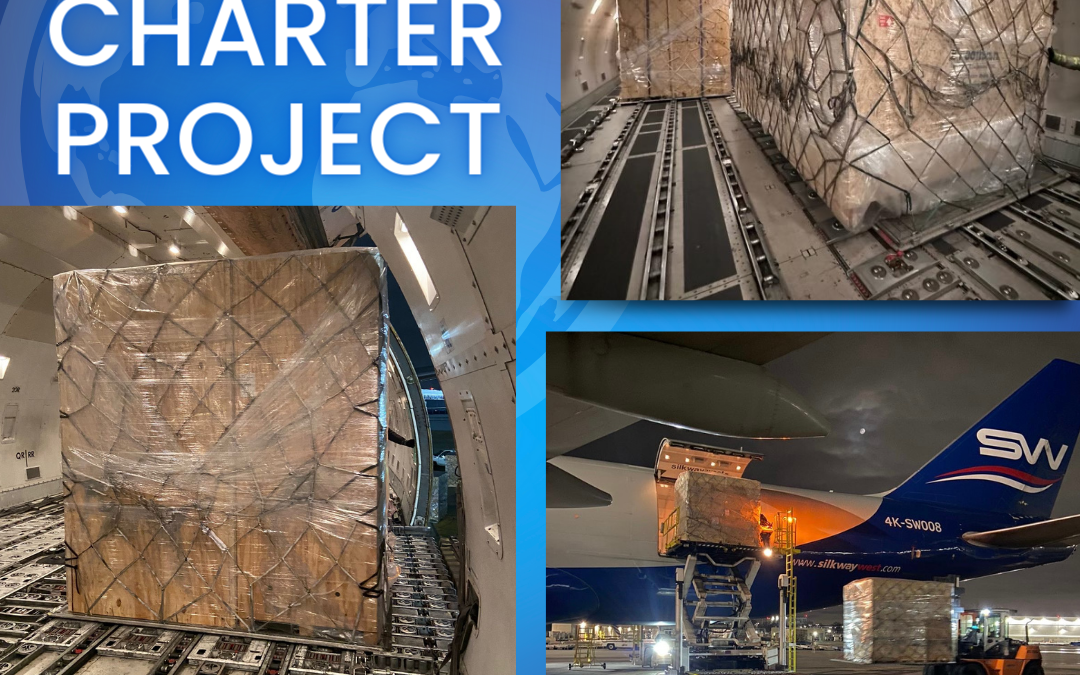
by logisticsplus | Feb 28, 2024 | News

The Logistics Plus (LP) Aero team completed an air charter project from the U.S. (Chicago and New York) to Tel Aviv, Israel. The cargo was 164 computer cabinets (built for servers) with a total payload of 56,000 kilograms.
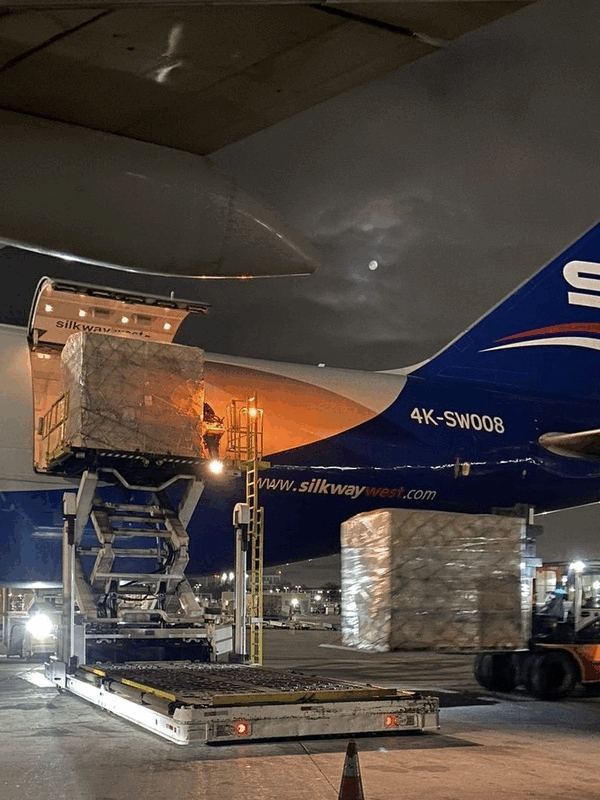
The Logistics Plus team handled the trucking from the client’s facilities to a Logistics Plus warehouse where the cargo was crated for airfreight. The cargo was then transported from the warehouse to Chicago (ORD) and New York (JFK) airports, where it was loaded onto a B747F aircraft for the charter flight to Tel Aviv. Upon arrival, Logistics Plus transported the cargo to the consignee’s facilities.
The project was successfully completed in accordance with the client’s timeline. LP Aero’s Global Director of Air Chartering, Andriy Blagovisniy, commented on this project, “This charter was a great example of the efficient teamwork of LP offices in the US and UK. No matter how complex the project, our teams are committed to finding the best solution tailored to the needs of our customers.”
Photos from this project can be seen below. To learn more about Logistics Plus Air Charter solutions, please visit logisticsplus.com/lpaero.

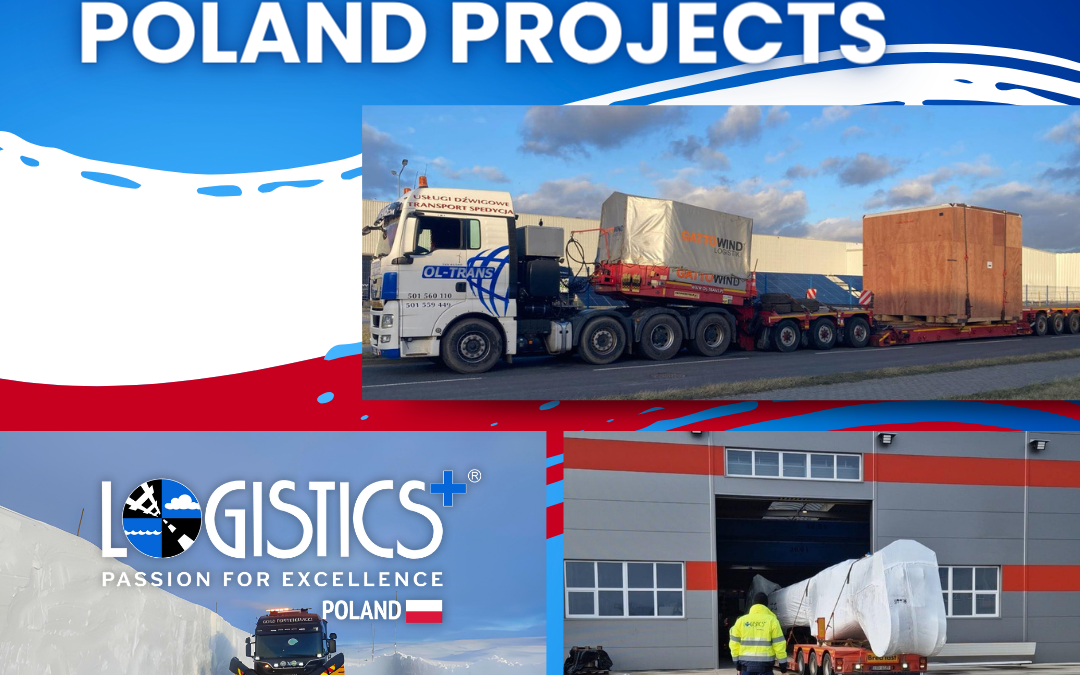
by logisticsplus | Feb 23, 2024 | News
 The Logistics Plus (LP) Poland team continues to support and manage projects across Poland and nearby countries. Here are the most recent projects handled by LP Poland in February 2024.
The Logistics Plus (LP) Poland team continues to support and manage projects across Poland and nearby countries. Here are the most recent projects handled by LP Poland in February 2024.
1) Compressor & Box
Just like the last few months, the LP Poland team handled the loading of a compressor and oversized boxes at the Baltic Hub. The boxes measured 5050 mm long, 4020 mm wide, and 3800 mm tall. The compressor weighed 18,788 kg.
2) 3D Electric Offshore Crane
The Logistics Plus Poland team delivered another 3D fully-electric offshore crane to the shipyard in Norway. The 20-meter boom was transported in heavy winter conditions, making this project a challenge.
3) Breakbulk Crate & Containers
LP Poland transported four breakbulk crates and three containers containing mechanical presses and accessories from Busan, Korea, to Łysomice, Poland.
Photos from these projects can be seen below. To learn more about Logistics Plus Poland, please visit pl.logisticsplus.com.
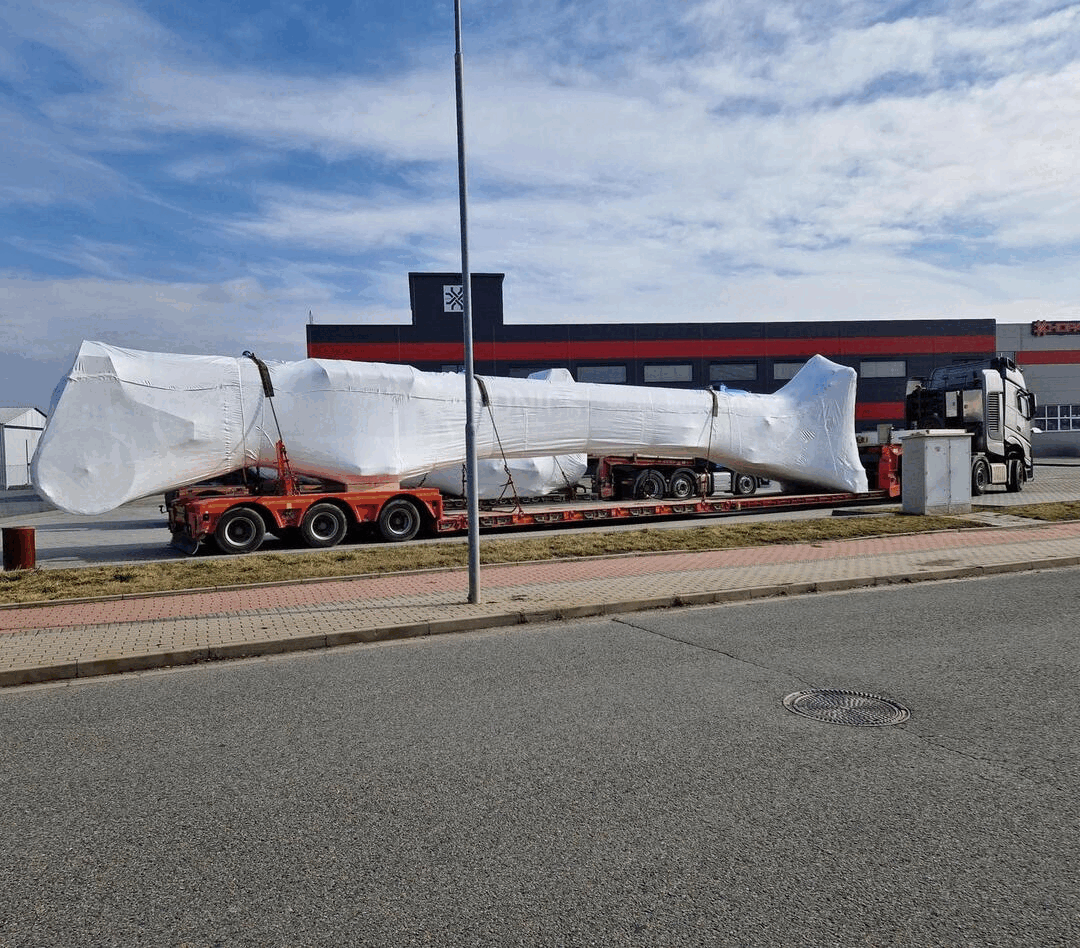
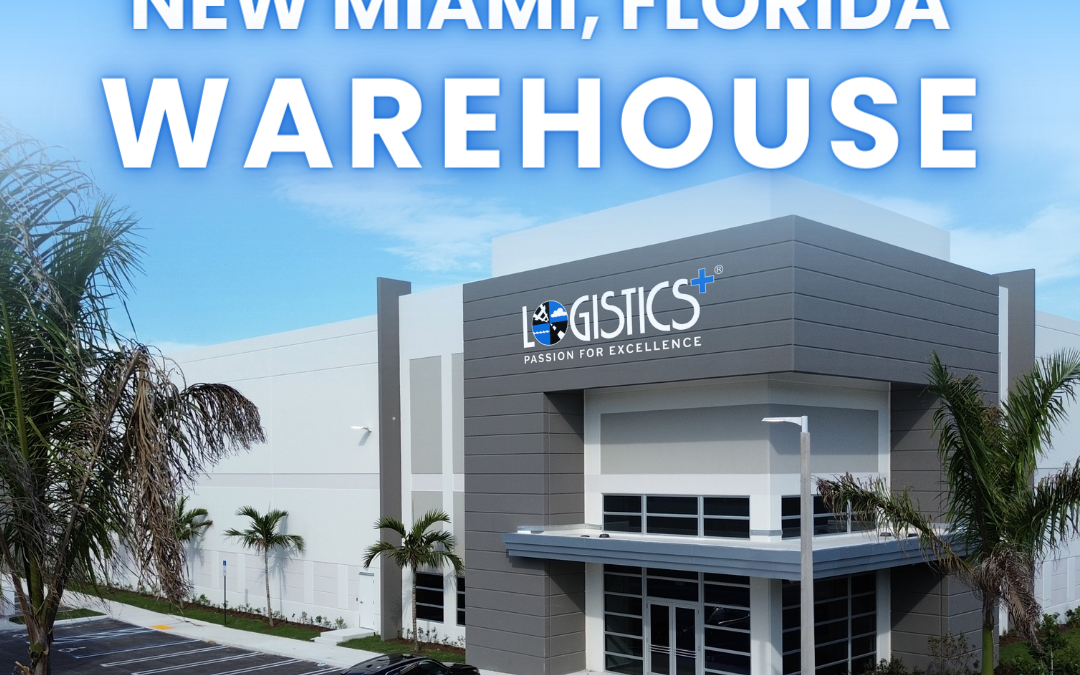
by logisticsplus | Feb 22, 2024 | News

Logistics Plus Opens New Miami, Florida Warehouse
Totaling over 182,000 square feet, it is the company’s second warehouse in Miami.
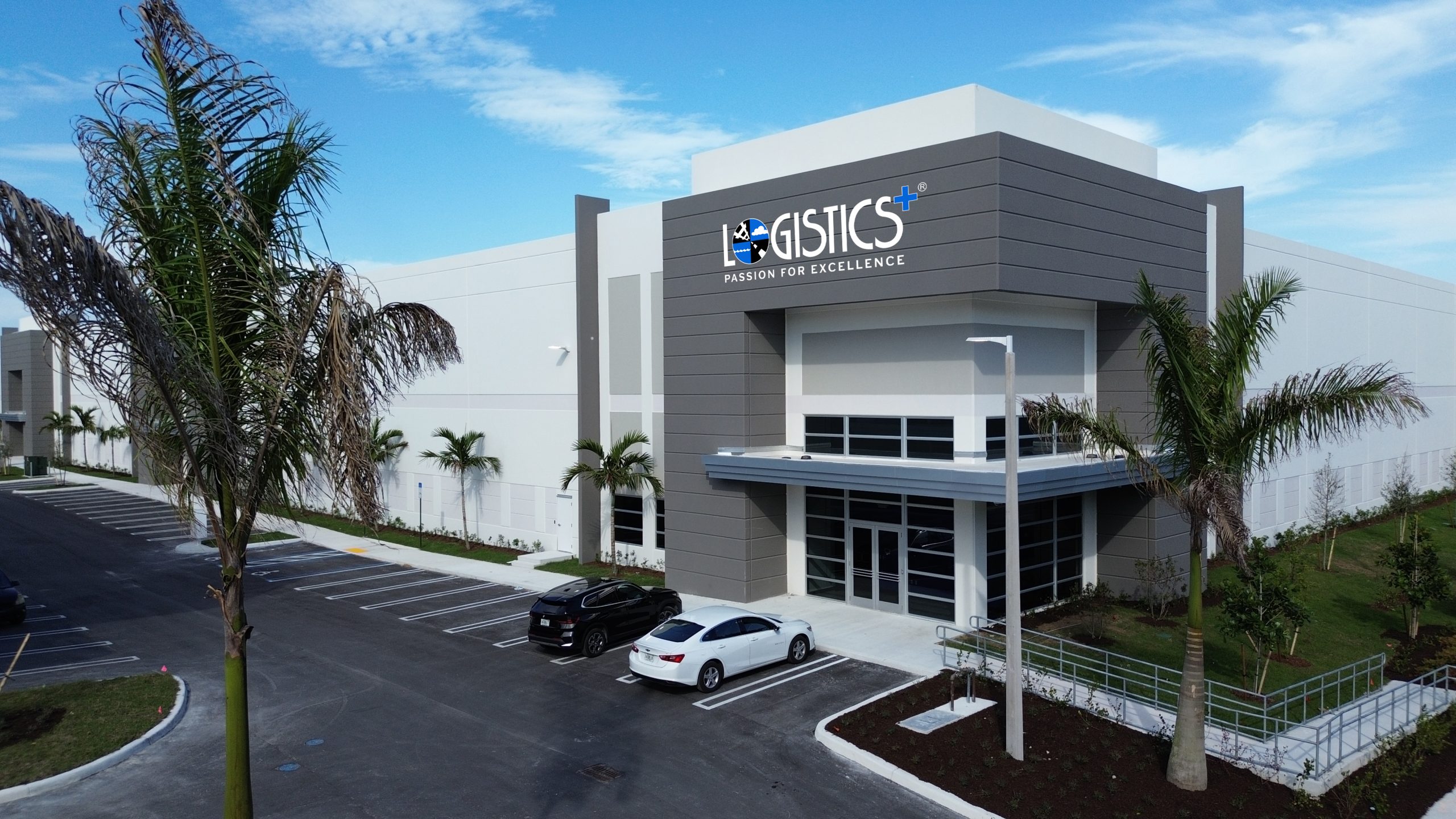 ERIE, PA (February 22, 2024) – Logistics Plus, Inc. (LP), a global leader in transportation, logistics, and unique supply chain solutions, is pleased to announce the opening of a new 182 thousand square foot warehouse at 9575 NW 174th Street, in Miami, Florida. Logistics Plus also has a facility in Doral, Florida, from which it has been operating for the past two years.
ERIE, PA (February 22, 2024) – Logistics Plus, Inc. (LP), a global leader in transportation, logistics, and unique supply chain solutions, is pleased to announce the opening of a new 182 thousand square foot warehouse at 9575 NW 174th Street, in Miami, Florida. Logistics Plus also has a facility in Doral, Florida, from which it has been operating for the past two years.
The new facility has 25 doors, 32-foot ceilings, 38 trailer positions, and a special 16×20′ oversized ramp door for OOG cargo and equipment, including automotive, yachts, boats, and maritime projects.
“We are proud to expand our growing operations here in southern Florida,” said Oscar Cabrales, Branch Manager for Logistics Plus Miami. ” With our new warehouse, we can continue providing world-class warehousing solutions for distributions, project cargo, pick pack and ship fulfillment, and anything our clients need for the South Florida market. Our facility will also be the gateway to our rapidly growing Caribbean and Latin American import and export operations.”
To learn more, visit logisticsplus.com/miami or email mimisales@logisticsplus.com.
About Logistics Plus, Inc.
Logistics Plus, Inc. (LP) is a 21st-century logistics company and a leading worldwide provider of transportation, warehousing, fulfillment, global logistics, business intelligence, technology, and supply chain solutions. LP works in the background to help businesses manage their supply chains in an ever-changing world. Founded in 1996, today LP has annual global sales of over $500M with more than 1,000 employees located in 50+ countries worldwide. LP is recognized as one of the fastest-growing privately-owned logistics companies, a top 3PL provider, a top 100 logistics company, a top freight brokerage and warehousing provider, and a great place to work. With a Passion For Excellence™, its employees put the PLUS in LOGISTICS by doing the big things properly, plus the countless little things that together ensure complete customer satisfaction and success.



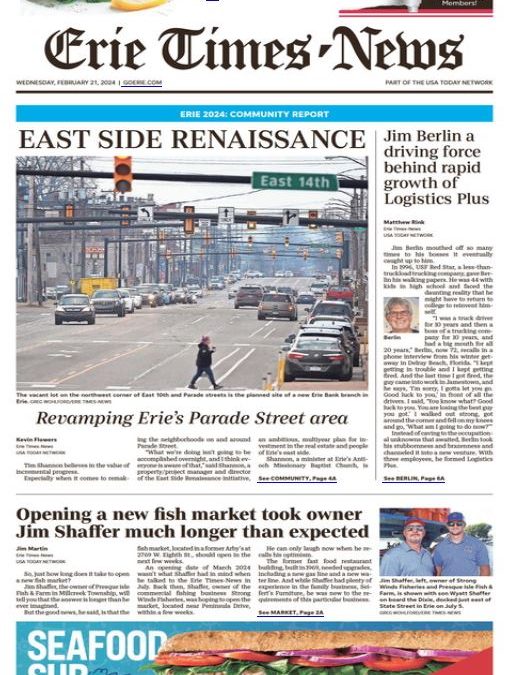
by logisticsplus | Feb 21, 2024 | News
Logistics Plus and its founder and CEO, Jim Berlin, were featured in the February 21, 2024 issue of Erie Times-News newspaper. Logistics Plus COO Yuriy Ostapyak was also quoted in the article. A reprint is included below, along with a link to the online version.
https://www.goerie.com/story/business/2024/02/21/logistics-plus-founder-jim-berlin-erie-pa-leads-company-rapid-growth-ge-wework-google-ukraine-war/72111350007/
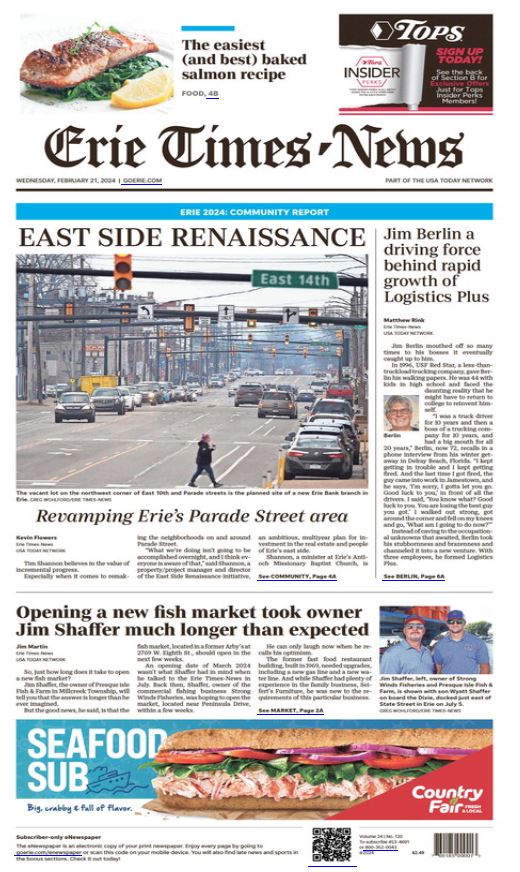
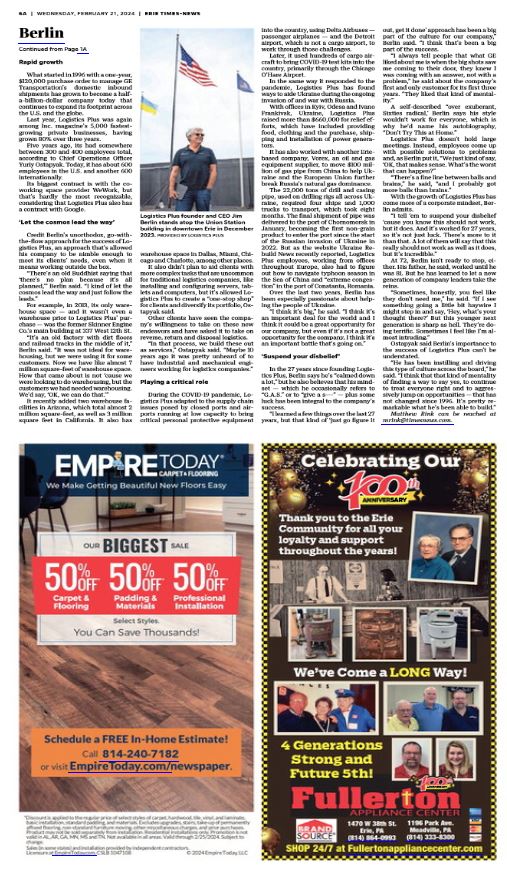

by logisticsplus | Feb 21, 2024 | News
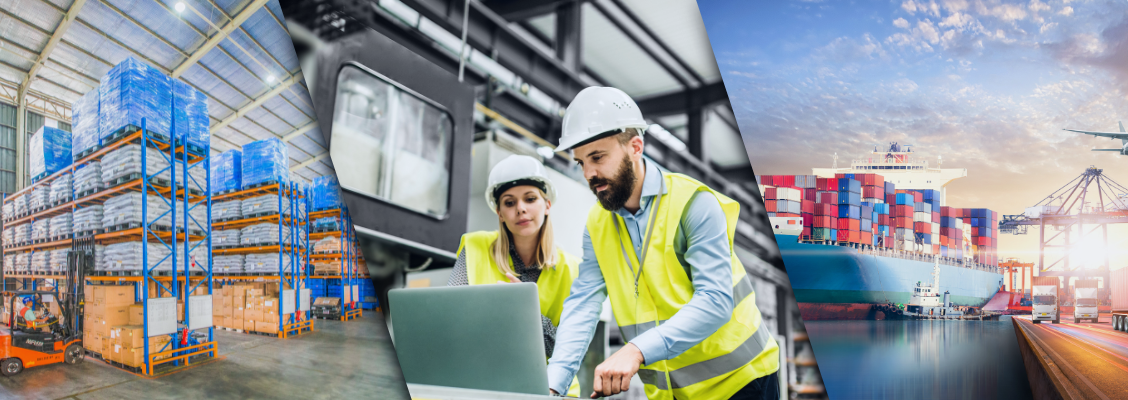

Does your U.S. business import goods that will ultimately be exported to customers outside the United States? If yes, your business might be using a class 6 warehouse, also known as a “manufacturing warehouse” or “bonded manufacturing warehouse.” A class 6 manufacturing warehouse is a special type of bonded facility authorized by customs authorities that allows for the in-bond manufacturing or processing of goods using imported materials or materials subject to internal revenue taxes. These manufactured goods can then be exported or, in some cases, sold domestically under specific regulations.
The import/export benefits of using a class 6 manufacturing warehouse include:
- Reduced duty payments: Importers can defer or even avoid paying import duties on materials used in manufacturing until the finished product is exported. This can significantly improve cash flow and reduce upfront costs.
- Increased flexibility: Importers can adapt their products to different markets or customer specifications by modifying them within the warehouse.
- Improved logistics: By combining import and manufacturing in one location, importers can streamline their supply chain and simplify logistics.
- Enhanced competitiveness: By manufacturing goods closer to the target market, exporters can reduce transportation costs and offer more competitive prices.
- Increased control over quality: Exporters can ensure product quality by directly overseeing the manufacturing process within the warehouse.
- Access to new markets: Manufacturing in a bonded warehouse can help exporters comply with specific import regulations in certain countries, opening up new market opportunities.
It’s important to note that:
- Class 6 manufacturing warehouses have specific regulations and requirements established by customs authorities. Obtaining and maintaining a license can be complex (if needed, Logistics Plus can help).
- Not all types of goods are eligible for manufacturing in a class 6 warehouse (Logistics Plus can help you determine whether your goods are eligible).
- Recordkeeping and security protocols are stringent within these facilities (Again, Logistics Plus can help with some or all of this).
Overall, class 6 warehouses can offer significant benefits to importers and exporters seeking to optimize their supply chains, reduce costs, and access new markets. They also work well in tandem with class 3 warehouses.
Logistics Plus currently has a class 3 bonded warehouse in Strongsville, OH (Cleveland), with additional class 3 manufacturing warehouses available soon in Chicago, IL; Dallas, TX; Memphis, TN; and Phoenix, AZ. Logistics Plus can help import goods and store them at one of our class 3 bonded warehouses until they are ready to go to your class 6 warehouse for final manufacturing and export. If you currently don’t have a class 6 warehouse, Logistics Plus can help find or staff one for you.
Check out this U.S. CBP online guide to the various classes of bonded warehouses.
Contact Us to learn more about Logistics Plus warehouse solutions.


by logisticsplus | Feb 8, 2024 | News
 The Logistics Plus Egypt team completed a fascinating project, handling the shipment of exquisite replicas of Egyptian pharaoh statues and a decorative sarcophagus. Demonstrating a blend of reverence for historical art and logistic mastery, the task involved the creation of custom-made crates designed to protect these artifacts.
The Logistics Plus Egypt team completed a fascinating project, handling the shipment of exquisite replicas of Egyptian pharaoh statues and a decorative sarcophagus. Demonstrating a blend of reverence for historical art and logistic mastery, the task involved the creation of custom-made crates designed to protect these artifacts.
Crafted to echo the grandeur of Egypt’s rich past, each replica required individualized packaging solutions. Our specialists developed bespoke crating, considering every contour and feature, ensuring these replicas were transported with the honor befitting royalty. With the dignified stance of the pharaohs and the sarcophagus, the statues were secured within robust enclosures, ready for their journey.
The project presented a unique opportunity to exhibit Logistics Plus Egypt’s commitment to delivering specialized shipping solutions. From the careful packing within our facilities to overseeing the loading process, meticulous attention to detail was paramount. Our global network was instrumental in maneuvering these replicas, ensuring they reached their destination in perfect condition.
To learn more about Logistics Plus Egypt, please visit eg.logisticsplus.com.











 ERIE, PA (February 22, 2024) – Logistics Plus, Inc. (LP), a global leader in transportation, logistics, and unique supply chain solutions, is pleased to announce the opening of a new 182 thousand square foot warehouse at 9575 NW 174th Street, in
ERIE, PA (February 22, 2024) – Logistics Plus, Inc. (LP), a global leader in transportation, logistics, and unique supply chain solutions, is pleased to announce the opening of a new 182 thousand square foot warehouse at 9575 NW 174th Street, in 






 The
The